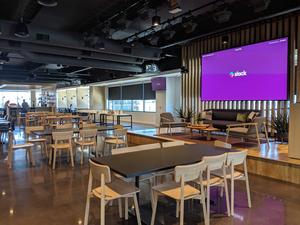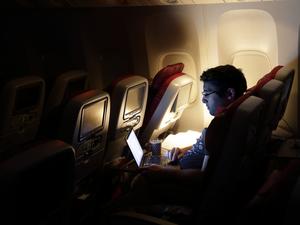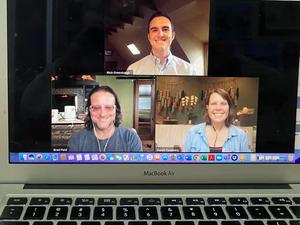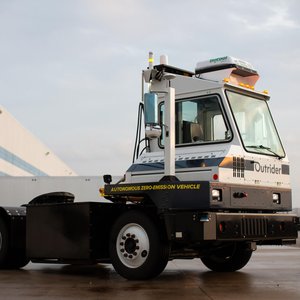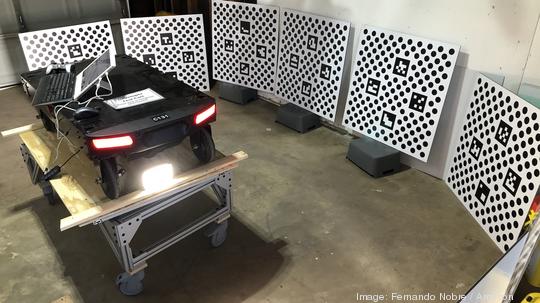
As Covid-19 forced many companies out of the office and into their homes, Amazon got creative to enable its Boulder-based robotics team to continue working.
The company’s Canvas Technology team, which was acquired by Amazon in April 2019, uses spatial artificial intelligence to create small autonomous carts that can move items through Amazon fulfillment centers to expedite the delivery of goods.
By using state-of-the-art cameras and sensors, these self-driving carts can perceive their surroundings, while computer vision allows them to adapt and self-direct their movement.
In March, the team made final preparations to comply with the stay-at-home order issued by the city. With that, came moving much of Canvas’ equipment to enable employees to work from home.
In one day, Amazon moved testing and manufacturing equipment and core operations from its combined Boulder office and lab space to several team members' homes.
“Then the magic really began, enabling them to build, test, calibrate, and validate fully functioning prototypes of our next generation autonomous carts from home,” Amazon Vice President Brad Porter wrote in a blog post.
Rather than being passed from station to station in a lab space, an autonomous cart made the trip from one employee's home to the next.
Evan Snyder, a hardware support engineer, built the sub-components from a newly created work bench in his apartment living room. He then transferred the components to begin the full prototype build at the home of fellow hardware support engineer, Mohamed Shanata.

Within 24 hours of receiving the components, Shanata assembled a functioning autonomous cart in his garage, with his three children watching along.
Once the prototype was built, the robot was transported to the home of R&D technician, Noah Sharit, to implement and test the safety systems.
Finally, the robot arrived at the home of Fernando Nobre, a computer vision scientist who improved the cart’s cameras by calibrating the systems to enable a 3D reconstruction of the cart's surroundings—this way the cart could find its own path among conveyors, pallets of products and constantly moving equipment and people.
In total, six robots circulated through seven team member homes, with precautions like disinfection taken on each transition.
“As our autonomous carts become more common across Amazon Operations, we will look back and remember the early innovations that came to life through these employees and their commitment to continue inventing in their Colorado garages,” Porter wrote.

